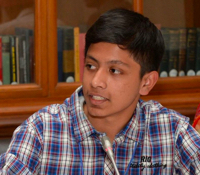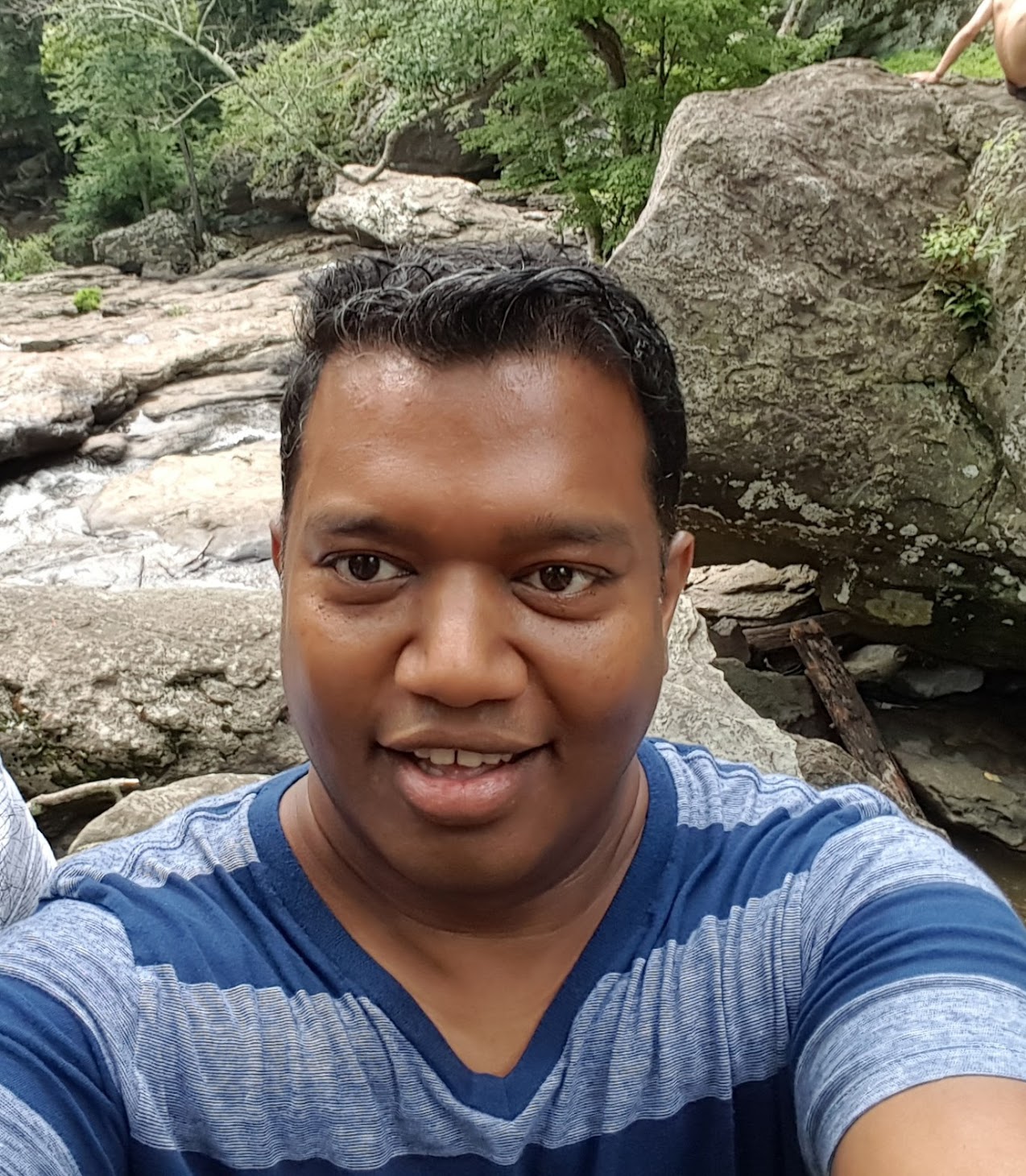15 year old teen invents device to detect a silent heart attack six hours before it occurs

This article was compiled from various blog sites that discussed the invention and details of the invention developed by Akash Manoj - a fifteen year old child prodigy over a three to five year period. The objective of this blog article is to describe his achievement and to provide a scientific detail around his invention (which I found lacking in other articles on-line). I felt that by providing the foundation and a road-map on how he devised the solution will encourage others to follow their inner creativity and dreams to achieve their desires and goals. This is my own understanding and interpretation based on the glimpses that was shared in various articles and by no means a first-hand account.
 Akash Manoj, a tenth grade student from Tamil Nadu, India has developed a new technique that can non-invasively detect the risk of a silent heart attack - something that can save many lives in rural areas.
Akash Manoj, a tenth grade student from Tamil Nadu, India has developed a new technique that can non-invasively detect the risk of a silent heart attack - something that can save many lives in rural areas.
The Stats: “Silent Heart Attack” is not only a major problem in India but all over the world. Two in one-hundred cases survive the attack and diagnosis is usually only after the attack. With no early warning or detection system in place and the costs for running such detection tests (after the heart attack) that could run up to 5000 Rs-INR ($100 USD or more) while it maybe too late. The decade old process involved either an electrocardiogram or echocardiogram [EKG] to detect the attack.
The Drive/Motivation: His grandfather dies from a silent heart attack when Akash was ten. His grandfather suffered for several years prior to the heart-attack from diabetes and high blood pressure. And one day had the silent heart attack, collapsed and died. This was the driving force that made Akash embark on a journey to create a device that could detect the “silent heart attack” so that precious lives could be saved.
Objective/Criteria: His criteria for the sensor included:
- Inexpensive
- Rapid
- Simple
- Sensitive
- Selective
- Non-invasive
- Portable
- Wearable
The Video: Here is a link to the YouTube video where he explains his invention and how he came up with it:
Akash Manoj talking about his invention on YouTube
The Research: Akash learnt from the Internet that during a heart attack, several hundred different unique proteins are sent out by the heart as an early-warning signal (SOS) into the blood-stream. He began a process of elimination to find the one unique protein marker that can be tracked by an external device. He determined that the FABP3 protein can be the marker that he needed to detect in quantities greater than a standard normal value. FABP3 is one of the smallest proteins that can be present in blood, and is charged negatively (so it attracted to positive charges). If a device can be constructed to attract the negatively charged particles to the surface then one could measure the quantity to deduce and detect a heart attack before it happens.
The Device:
- A small silicon patch stuck to your wrist or back of your ear can be used regularly to monitor whether there has been a heart attack instead of waiting for a doctor to prescribe a test.
- The patch uses a positively charged electrical impulse to draw negatively charged —protein to the surface.
- If the amount of FABP3 is high, then the person would need immediate medical attention.
- People who are at risk are recommended to use the device twice a day – in the morning and at night, before going to bed.
- The product can soon be seen in the market and would cost around R 900, cheaper than a glucometer.
Testing: How do you test the device and how do you calibrate it?
Akash’s model consists of a silicone membrane that represents the skin capillaries, and a drop of a solution of proteins albumin and FABP3 to simulate blood. He further explains that when a small potential of positive charge is applied to the model FABP3 accumulates on dermal capillaries. The same can be then detected by ultra-violet (UV) quantification.
ultra-violet (UV) quantification explained:
 Light is made up of positively charged particles or photons. Most molecules in nature absorb the photons in various quantities which are present in the ultra-violet light or visible spectrum of light. When you sit under the sun, during exposure to sunlight, 7-dehydrocholesterol in the skin absorbs UV radiation and is converted to previtamin D3 which in turn isomerizes into vitamin D3. (don’t worry if it sounds too complicated). Putting it in layman terms, when you sit under the sun, the 7-dehydrocholesterol proteins absorb the photons from sunlight (because they are negatively charged) and convert them to vitamin-D. Visible Light and UV light is composed of a broad spectrum of wavelengths. Different wavelengths show up as different bands of colored light on a spectrum. Remember the experiment where light is shot through a prism and when projected on a wall shows up with all the colors of the rainbow. Each color in the rainbow represents a different wavelength of light. The more excited the photons the closer to the red-spectrum. The more cooler (less excited photons), they register as blue light.
Light is made up of positively charged particles or photons. Most molecules in nature absorb the photons in various quantities which are present in the ultra-violet light or visible spectrum of light. When you sit under the sun, during exposure to sunlight, 7-dehydrocholesterol in the skin absorbs UV radiation and is converted to previtamin D3 which in turn isomerizes into vitamin D3. (don’t worry if it sounds too complicated). Putting it in layman terms, when you sit under the sun, the 7-dehydrocholesterol proteins absorb the photons from sunlight (because they are negatively charged) and convert them to vitamin-D. Visible Light and UV light is composed of a broad spectrum of wavelengths. Different wavelengths show up as different bands of colored light on a spectrum. Remember the experiment where light is shot through a prism and when projected on a wall shows up with all the colors of the rainbow. Each color in the rainbow represents a different wavelength of light. The more excited the photons the closer to the red-spectrum. The more cooler (less excited photons), they register as blue light.
 Each protein responds differently to the different wavelengths of light. Johann Heinrich Lambert in 1760, noted that the absorbance of a material sample is directly proportional to it’s thickness (path length). In 1852, August Beers discovered that the absorbance of light is proportional to the concentration of the attenuating species in the material sample. The modern derivation of the Beer-Lambert law combines the two laws and correlates the absorbance to both the concentrations of the attenuating species as well as the thickness of the material sample. Since different molecule absorbs radiation (light) at different wavelengths. An absorption spectrum will show a number of absorption bands corresponding to structural groups within the molecule. By measuring the difference in radiation/light from what was transmitted to what was measured leaving the sample one can deduce the amount of radiation that was absorbed by the sample. Or in other words, imagine an orange light entering the medium and comes out blue. Now by looking at the change in color of the out-coming light you can detect high concentrations of a certain particles in the medium. So by analyzing how a certain color of light changes its color when reflected back with the high concentrations of FABP3 proteins, once can then formulate the presence or absence of high concentrations of the FABP3 protein in the medium. Now all of this sounds very simple but it’s still a needle in a haystack when you look at different shades of the same color and that is where a spectroscope or spectrometer comes into play. Both a spectroscope and spectrometer work similar where light is separated into light bands/particles to indicate the intensity of the light as a function of wavelength.
Each protein responds differently to the different wavelengths of light. Johann Heinrich Lambert in 1760, noted that the absorbance of a material sample is directly proportional to it’s thickness (path length). In 1852, August Beers discovered that the absorbance of light is proportional to the concentration of the attenuating species in the material sample. The modern derivation of the Beer-Lambert law combines the two laws and correlates the absorbance to both the concentrations of the attenuating species as well as the thickness of the material sample. Since different molecule absorbs radiation (light) at different wavelengths. An absorption spectrum will show a number of absorption bands corresponding to structural groups within the molecule. By measuring the difference in radiation/light from what was transmitted to what was measured leaving the sample one can deduce the amount of radiation that was absorbed by the sample. Or in other words, imagine an orange light entering the medium and comes out blue. Now by looking at the change in color of the out-coming light you can detect high concentrations of a certain particles in the medium. So by analyzing how a certain color of light changes its color when reflected back with the high concentrations of FABP3 proteins, once can then formulate the presence or absence of high concentrations of the FABP3 protein in the medium. Now all of this sounds very simple but it’s still a needle in a haystack when you look at different shades of the same color and that is where a spectroscope or spectrometer comes into play. Both a spectroscope and spectrometer work similar where light is separated into light bands/particles to indicate the intensity of the light as a function of wavelength.
 So putting all of this together, when the heart produces SOS signals by flooding the bloodstream with various proteins, the FABP3 protein being one of the smallest protein escapes in small quantities all the way through the skin capillaries (almost like sweat on the skin). The presence of high-concentrations of FABP3 on the surface is registered by the patch which measures the change in the wavelength (and this is the secret sauce). When enough quantities are noticed, the unit triggers an indicator warning the user of an eminent “silent” heart-attack. Thereby saving countless lives.
So putting all of this together, when the heart produces SOS signals by flooding the bloodstream with various proteins, the FABP3 protein being one of the smallest protein escapes in small quantities all the way through the skin capillaries (almost like sweat on the skin). The presence of high-concentrations of FABP3 on the surface is registered by the patch which measures the change in the wavelength (and this is the secret sauce). When enough quantities are noticed, the unit triggers an indicator warning the user of an eminent “silent” heart-attack. Thereby saving countless lives.
And when you read his comments on all the blogs where he is mentioned, his key driver was “encouragement” (encouragement provided by his family, his friends, his teachers, etc.) See my previous article on - Life’s Possibilities when fueled by Encouragement, Desire, Strength and Determination. His grandfathers’ heart-attack gave him the desire to develop a early-detection system. Fueled by his personal strength and determination. And so now you have the real formula or the secret sauce that is priceless.
So if you’re reading this, go find your passion, your creativity like Akash Manoj and change this world. And at the very least, encourage someone in your life so that they can pave the way to the moon and the stars for all of humanity to follow. At this humble moment, I am reminded of the quote by Eleanor Roosevelt - “Do one thing every day that scares you.”
Your one thing can start today and now!
Credits:
- Electromagnetic Spectrum - https://en.wikipedia.org/wiki/Electromagnetic_spectrum
- Visible Spectrum - https://www.britannica.com/science/light
- Prism animation - https://en.wikipedia.org/wiki/Prism
- Photos and illustration are from the public domain

